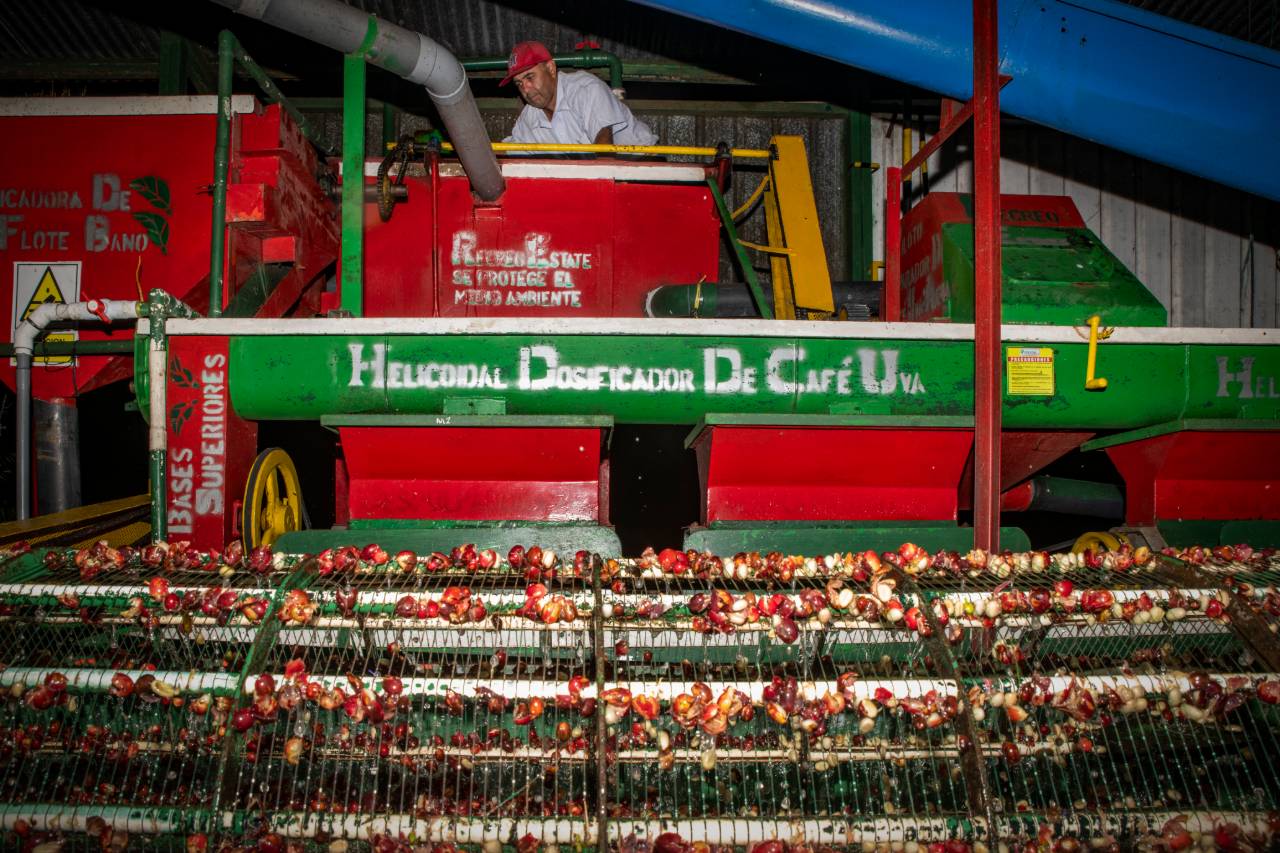By Bob Fish (Photos from El Recreo Coffee Farm in Nicaragua)
Coffee is not a bean. It is the seed of a fruit.
Coffee begins its life as a flower that blooms in April in Nicaragua.

From the flower comes a green fruit that is a Coffee Cherry or Berry, that resembles in look, the cherry fruit grown in the Northern Americas. These Coffee Cherries reach full size our late Summer and early Fall.

Coffee cherries ripen to a bright red and must be picked in our late fall and winter at El Recreo.
Coffee cherries do not ripen simultaneously, and a picker must pick only the red, leaving the green behind to be harvested later.
Harvesting coffee requires a skilled picker. (READ: A Day in the Life of a Coffee Picker)

The red cherries must be ‘wet milled’, meaning the Beans (seeds) need to be removed from the pulp.
Wet milling in El Recreo takes place on the farm and is a mechanical process, that first sorts bad cherries, twigs, and leaves out, and then separates the coffee beans and sends them to tiled holding tanks for twelve hours of fermentation with some light fruit and the silver skin still in place.
After fermentation the beans are rinsed one more time and sent to drying.
Drying takes place in hoop houses that protect the beans from too much sun and keep moisture and rain away. The objective is to reduce the moisture content slowly from almost 20%, down to just under 10%.
The appearance of the coffee beans at this point is almost white because the silver skin is still present, but underneath is a green coffee bean.


Sometimes the coffee beans will be dried with fruit on them in African Drying beds, sometimes referred to as a honey process. This can add fruitiness and/or sweetness to the flavor profile.

Once the beans are dried, they are bagged, and ready to be taken by truck to a ‘Dry Mill’ process off the farm.
Dry mills are usually located at the heart of a coffee growing region on a major road. In Nicaragua, this is in the City of Sebaco, about midway between Pueblo Nuevo and Managua
They are usually owned by third parties or a co-op, and will dry the beans additionally (if they need it), take the silver skin off, sort, grade, and measure for defect, and last bag and prepare for shipment in a sea container.

The sorting will include measuring the density, the size, and the color of the bean.
Then it’s bon-voyage over the seas and 28 days later it will arrive in a US Port with coffee storage facilities.





